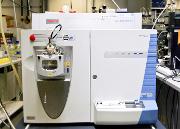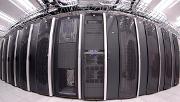Facilities
Through its members and collaborators, the SmallStruct platform has access to a range of analytical- and computational tools suited for solving structural problems.
Nuclear magnetic resonance spectroscopy (NMR)The NMR facility has recently been upgraded with two completely new Bruker systems, one open access 9.4 Tesla Avance III HD system equipped with a SmartProbe (broad band) operating at 400 MHz and one 14.1 Tesla Avance III HD system operating at 600 MHz for 1H, The high field system is equipped with an inverse HCN cryogenically enhanced probe (TCI, enhanced for 1H, 13C and 2H), allowing us to fully characterize small amounts of pure unknown material, currently down to approximately 20-50 µg for an average size small molecule. NMR is an extremely versatile method based on the behavior and interaction between magnetic spins of atomic nuclei. Different sets of experiments provide information about the bonding network, the 3D configuration and conformation in solution, as well as information about different dynamics time scales and their interactions with macromolecules and more.
|
|
Mass spectroscopy (MS)The MS lab consists of a high resolution Thermo electron LTQ orbitrap XL with an electrospray ion source (ION-MAX), allowing determination of the exact mass and elemental composition as well as efficient fragmentation down to MS4 on minute amounts of sample.
An MS with an orbitrap has both the capability to determine the exact mass of an unknown molecule and from this calculate the molecule formula, as well as to break up molecules into fragments that provide structural information about the mother ion. The same principles can be used to sequence peptides and other polymers.
|
 |
Isothermal titration calorimertry (ITC)A MicroCal iTC200 system is accessible for in house studies of interaction thermodynamics and stoichiometry. The instrument is highly sensitive and can as little as 10 µg of biomolecule in single- or multiple injection modes, without the need of any assay development, labelling or immobilization. One experiment will provide all binding parameters - affinity, stochiometry, enthalpy and entropy. |
![Microcal_ITC200_clear[1]-1361280869920.jpg](https://en.uit.no/ikbViewer/Content/370745/attr=F4D1650068087931E040F2818AA02E55/Microcal_ITC200_clear[1]-1361280869920.jpg) |
Computation clusterThe platform has generous access to the national computation center through the Center of Theoretical and Computational Chemistry (CTCC). The CTCC provides world leading competence and state-of-the-art software for the accurate simulation of spectroscopic parameters like IR-, ROA- and VCD spectra, as well as NMR parameters like chemical shifts and long range coupling constants of complex molecules. |
 |
Infrared spectroscopy (IR)The Organic Chemistry research group hosts a Varian 7000e FT-IR spectrometer. IR measures the absorption of the sample at different wave lengths, resulting in a spectra that is characteristic for each molecule measured. The method is fast and sensitive and can add another layer of knowledge about the studied molecule. |
 |
Associated platforms/centers
Academic collaborators
| Natural Products and Medicinal Chemistry, IFA, Tromsø | |
| Marine bioprospecting, Faculty of Biosciences, Fisheries and Economics, Tromsø | |
Commercial collaborators
Useful links

